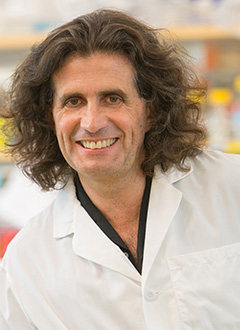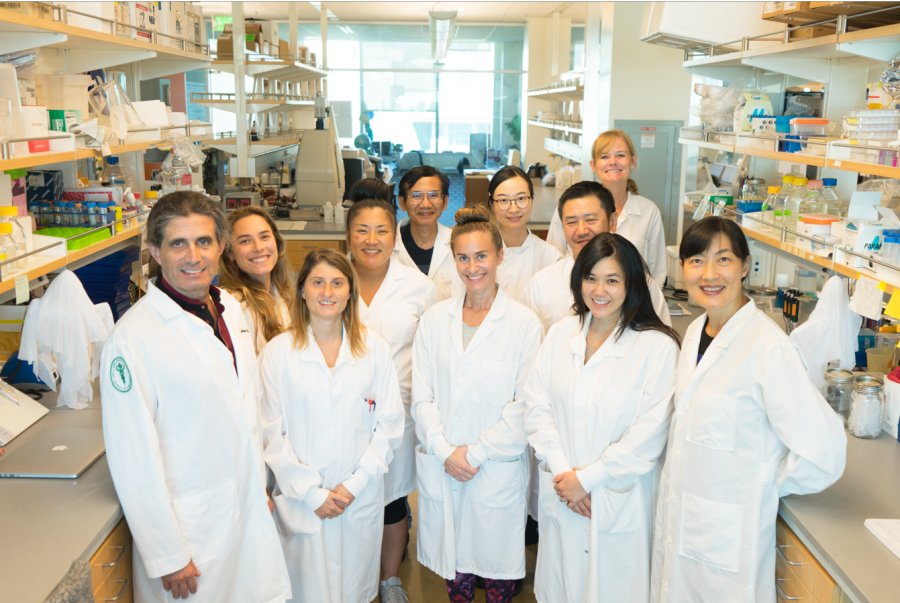Michele Carbone1, Ting-Ting Yan2
1William & Ellen Melohn Chair in Cancer Biology; Director, Thoracic Oncology, University of Hawaii Cancer Center; Professor, Department of Pathology, John A. Burns School of Medicine; Department of Pathology, University of Hawaii Cancer Center, Honolulu, HI, USA; 2TLCR Editorial Office, AME Publishing Company
Correspondence to: Ting-Ting Yan. TLCR Editorial Office, AME Publishing Company. Email: editor@tlcr.org.
Editor’s note
Translational Lung Cancer Research (TLCR) has published a number of special series in recent years, receiving overwhelming responses from academic readers around the world. Our success cannot be achieved without the contribution of our distinguished guest editors. This year TLCR launched a new column, “Interviews with Guest Editors”, to better present our guest editors and to further promote the special series. We also hope to express our heartfelt gratitude for their tremendous effort and to further uncover the stories behind the special series.
The special series “Mesothelioma: What We Know and What We Do Not Know in 2020”(1) led by Dr. Michele Carbone (Figure 1) has attracted many readers since its publication. The articles in this special series have been written by top experts in the field, and we sincerely hope that this comprehensive series could serve as a guide to mesothelioma to both MDs and PhDs. At this moment, we are honored to have an interview with Dr. Carbone to share his scientific career experience and insights on this special series.

Figure 1 Dr. Michele Carbone.
Expert introduction
Dr. Michele Carbone is a board-certified Anatomic Pathologist and cancer researcher. He is one of the world’s leading scientists in the area of mesothelioma, a cancer that is often associated with asbestos exposure. His research into why most people who have been exposed to asbestos do not get mesothelioma has led him to investigation of interactions between genetics and the environment. It is a combination of the field-work he conducted over 12 years in 3 villages in Cappadocia, Turkey, and in remote areas of the US, with sophisticated molecular genetics work and vital clinical-diagnostic work in his laboratory. Accomplish by a dedicated effort over a long period of time, Carbone and his team elucidated key mechanisms of asbestos carcinogenesis and how BAP1 modulates gene-environment interaction and promote tumor growth. Carbone used his novel findings to implement preventive screening programs for early detection and curative resection of melanoma and other cancers among BAP1 germline mutations carriers, and he convinced Turkish and US States (ND) Authorities to re-build 2 new villages, Karain and Tuzkoy in Cappadocia, and to repave >300 miles of dirt roads in ND, to reduce exposure to carcinogenic fibers and prevent mesothelioma.

Figure 2 Dr. Michele Carbone (first on the left), Dr. Haining Yang (first on the right), and their lab team members at the University of Hawaii Cancer Center
Interview
TLCR: What drove you into the field of mesothelioma?
Dr. Carbone: Chance. When I was at NIH as a visiting fellow, I injected hamsters with SV40 and they came down with mesothelioma. I guess previous virologists thought these were "sarcomas". Because of my pathology training, I realized they were mesotheliomas, and was intrigued and started studying what was going on and how mesothelioma developed.
TLCR: We know that you and Dr. Adi Gazdar were friends. Could you share some stories about your friendship with us briefly?
Dr. Carbone: Sure. Adi Gazdar was a great scientist, a critical thinker and he was very direct. I presented my findings at the International Mesothelioma Interest Group meeting (IMIG) , which I think was held in Philadelphia , that SV40 DNA and proteins are present in some human mesotheliomas. Adi Gazdar raised his hand and said , "I do not believe you, this is probably a passenger virus present in both tumor and normal cells. I will check and prove you wrong”. Well those were pretty strong words, but that was Adi! He spoke up his mind! A few months went by, maybe a year, and the phone rang in my office “Hi, this is Adi Gazdar remember of me? Of course I did! He said he had checked and using laser microdissection, at the time a novel technique, to dissect normal from tumor tissue from the same mesothelioma biopsies and, to his surprise he had found the SV40 DNA only in the tumor tissue. He said “you were right and that he was going to publish the results stating so. He did, see reference below(2). We became good friends and we always spent time together when we met at meetings and made time to have one dinner together. He loved Arneis, an Italian white wine from Piedmont, also one of my preferred white wines.
TLCR: Years have passed since the publication of the focused issue. Has there been any new progress in the research of Simian virus 40 (SV40) in recent years?
Dr. Carbone: No, because I have been too busy studying our discovery that germline BAP1 mutations cause mesotheliomas and other malignancies, and why these mesotheliomas are less aggressive. I have had no time, nor the funding, to further study SV40.
TLCR: What do you see as the most important direction for future studies on SV40 human infections? Are there any particular challenges or obstacles that need to be overcome in order to make progress in this direction?
Dr. Carbone: It is a very difficult area of research because hundreds of millions of people have been vaccinated with poliovaccines that were potentially contaminated with infectious SV40, but as noted by a review by the Institute of Medicine, there are no records to know for sure who among them got contaminated vaccines and who did not. Therefore, it is impossible to study epidemiologically whether poliovaccines caused or did not cause an increase in certain types of cancer. Without this information, it is extremely difficult or impossible to win a grant, and without funding it is impossible to conduct research!(3)(4)
TLCR: Have you recently conducted any research projects related to the topic of this focused issue? If so, could you share some of your key findings?
Dr. Carbone: I have been studying why carriers of germline BAP1 mutations develop mesotheliomas and why their mesotheliomas are significantly less aggressive. Briefly, we found that:
- BAP1 forms a trimer with HMGB1 and HDAC1. When BAP1 is mutated, HDAC is ubiquitylated and degraded. This causes hyperacetylation of HMGB1 that is released extracellularly where it promotes cancer growth.(5)
- BAP1 binds and stabilizes HI1-alpha, the protein mainly responsible for tumor cell survival and growth in hypoxia-cancers growing in a hypoxic environment. All mesotheliomas developing in carriers of germline BAP1 mutations acquire a second somatic mutation of BAP1, so tumor cells are entirely BAP1 negative. In addition, carriers of germline BAP1 mutations also reduced BAP1 in normal cells forming the tumor microenvironment. This causes widespread degradation of HIF1-alpha, which we think is related to reduced tumor growth and increased response to therapy. Indeed, we have discovered, and others have confirmed, that mesothelioma in carriers of germline BAP1 mutations has a median survival of about 6-7 years, and about 20% of patients survive 10-20 years or more – some of them dying of old age.(6)(7)
TLCR: If given an opportunity to update this special series, what would you like to moderate, add or emphasize to provide a more informative series?
Dr. Carbone: You could make a volume on the role of germline mutations in human cancer, including mesothelioma, lung cancer and other malignancies
Reference
- Mesothelioma: What We Know and What We Do Not Know in 2020. Available online: https://tlcr.amegroups.com/post/view/mesothelioma-what-we-know-and-what-we-do-not-know-in-2020.
- Shivapurkar N, Wiethege T, Wistuba II, et al. Presence of simian virus 40 sequences in malignant mesotheliomas and mesothelial cell proliferations. J Cell Biochem. 1999;76(2):181-8.
- Cutrone R, Lednicky J, Dunn G, et al. Some oral poliovirus vaccines were contaminated with infectious SV40 after 1961. Cancer Res. 2005;65(22):10273-9.
- Rizzo P, Di Resta I, Powers A, et al. Unique strains of SV40 in commercial poliovaccines from 1955 not readily identifiable with current testing for SV40 infection. Cancer Res. 1999;59(24):6103-8.
- Novelli F, Bononi A, Wang Q, et al. BAP1 forms a trimer with HMGB1 and HDAC1 that modulates gene × environment interaction with asbestos. Proc Natl Acad Sci U S A. 2021;118(48):e2111946118.
- Bononi A, Wang Q, Zolondick AA, et al. BAP1 is a novel regulator of HIF-1α. Proc Natl Acad Sci U S A. 2023;120(4):e2217840120.
- Carbone M, Pass HI, Ak G, et al. Medical and Surgical Care of Patients With Mesothelioma and Their Relatives Carrying Germline BAP1 Mutations. J Thorac Oncol. 2022;17(7):873-889.
